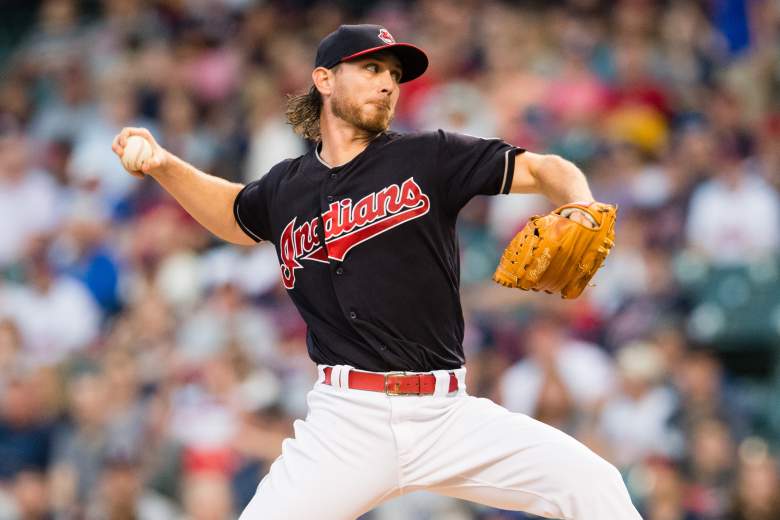As a pitcher whose fastball averages 88.3 mph, Josh Tomlin can’t rely on his stuff alone to get hitters out. Instead, Tomlin has to rely on a strong game plan and pinpoint command to retire his opponents. For the most part, Tomlin is successful: he’s only allowed 1.24 walks per nine innings since his 2010 debut, which is best in the majors during that time. His ability to avoid free passes helps to slightly mitigate the 1.53 home runs he’s allowed every nine innings in the same stretch, which is fourth-worst in the MLB. As a result, he’s managed to carry a 4.54 FIP for his career – hardly anything to get excited about, but passable for a #4 or #5 starter.
Every time Tomlin pitches, he is essentially walking a tight rope. So long as he is throwing the right pitches in the right spots, he is a solid pitcher. The difference between Tomlin and most pitchers is that when he makes a mistake, hitters are more capable of driving his slower offerings further than other pitchers’ mistakes. Most MLB pitchers allowed roughly 10% of their fly balls to become home runs. For his career, Tomlin has allowed 13.4% of his fly balls to leave the park (T-19th worse since 2010). Just like batters are trying to hit more fly balls to maximize their home run potential, pitchers (especially those like Tomlin who are susceptible to the long ball) are best served inducing more ground balls.
As Mike Hattery of Waiting for Next Year noted, it appeared the ever-crafty Tomlin had gone on a mission to give up fewer of the fly balls that have hurt him so much in his career. In a piece last week, Hattery noted that Tomlin had essentially stopped throwing his typical four-seam fastball, and instead has thrown a mix of cutters and sinkers, as shown in the table below.
In terms of limiting fly balls (and inducing more ground balls), the switch to the sinker seems to have worked. In 2017, Tomlin’s sinker has a ground ball rate of 56.9%, and a fly ball rate of just 20.8%. Both marks are a large improvement over Tomlin’s fastball, which for his career, has carried a 29.5% ground ball rate, and a 44.3% fly ball rate.
Looking at this data alone, it would appear Tomlin has made a breakthrough – by cutting his fly ball rate almost in half on his primary pitch, without sacrificing command, Tomlin should become a formidable pitcher. Unfortunately, it isn’t that simple. Tomlin increased his sinker usage, which did indeed result in fewer fly balls and more ground balls, but opposing hitters have done considerable damage against the pitch in 2017. This year, Tomlin’s sinker has by far been his worse pitch, with opponents batting .400 and slugging .614 against it, according to Brooks Baseball. However, with Tomlin’s BABIP on sinkers this year sitting at .407, it’s clear there is some noise in that small sample. Luckily, we can look at Tomlin’s career numbers to provide more clarity.
Looking at more complete data, Tomlin’s sinker may not be worse than his fastball, but it certainly isn’t much better. Instead, it appears Tomlin may be best off focusing on his cutter more frequently.
While Tomlin’s opponents hit fewer fly balls off his sinker than his four-seam fastball, when they do get the ball airborne, they do more damage. When hitting sinkers in the air, Tomlin’s opponents hit home runs more frequently, and pop the ball up less often – making the difference between the two pitches somewhat negligible. As mentioned, it appears Tomlin’s cutter is the best pitch out of the three, meaning that his increased sinker usage at the expense of the cutter could be misguided.
The cutter offers a happy medium of the three pitches – his career ground ball rate with the pitch is 43.6%, which is significantly greater than 29.5% from his four seamer, albeit less than the 56.9% he’s been able to generate off the sinker in recent years. However, it also comes with a lower HR/FB rate, and generates more pop ups.
Still, with opponents averaging a 122 wRC+ against his cutter, it’s hardly a dominant pitch. No matter what, Tomlin will struggle throwing any “hard” pitches that sit between 86-89 mph. There isn’t a remedy to Tomlin’s problem, but to truly optimize his arsenal, Tomlin should probably use his cutter and curveball (career 41 wRC+ against) more often than any other pitches.
Add The Sports Daily to your Google News Feed!


